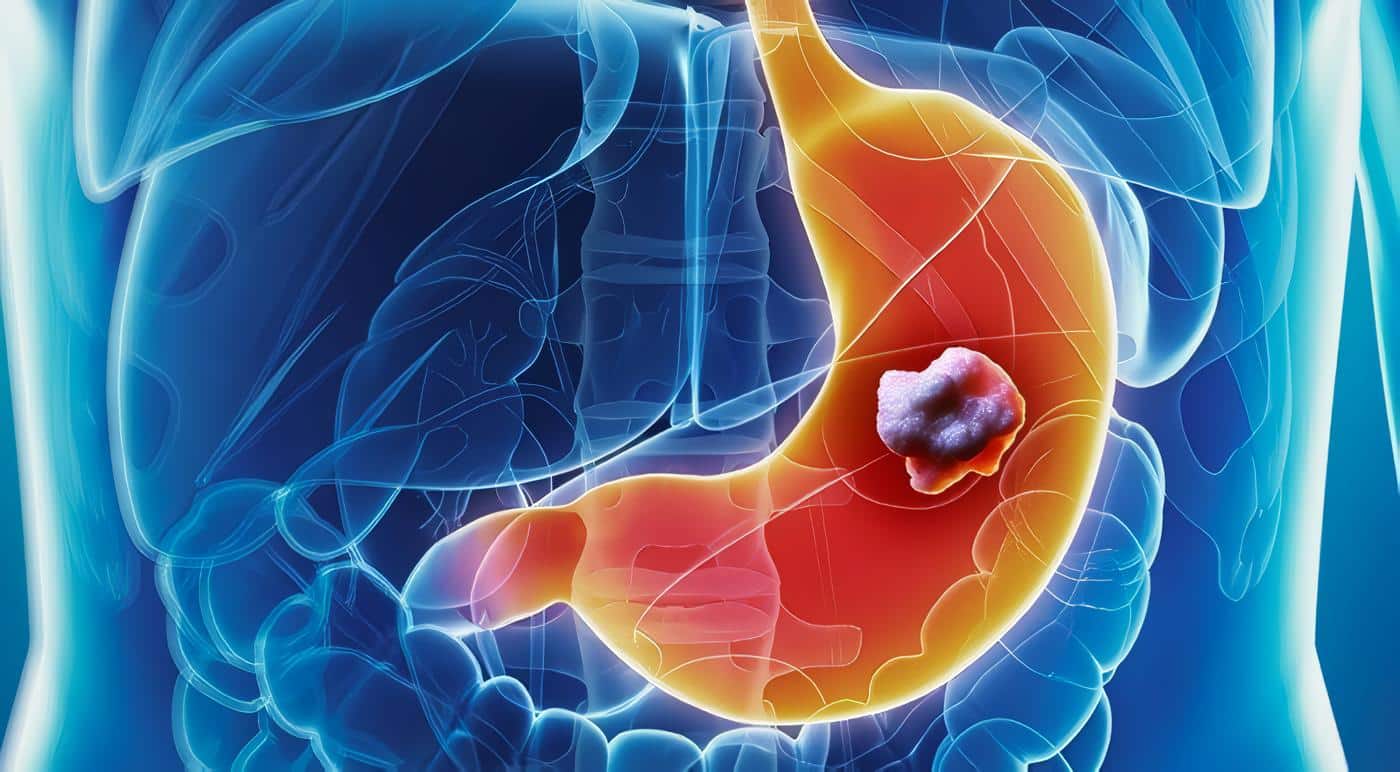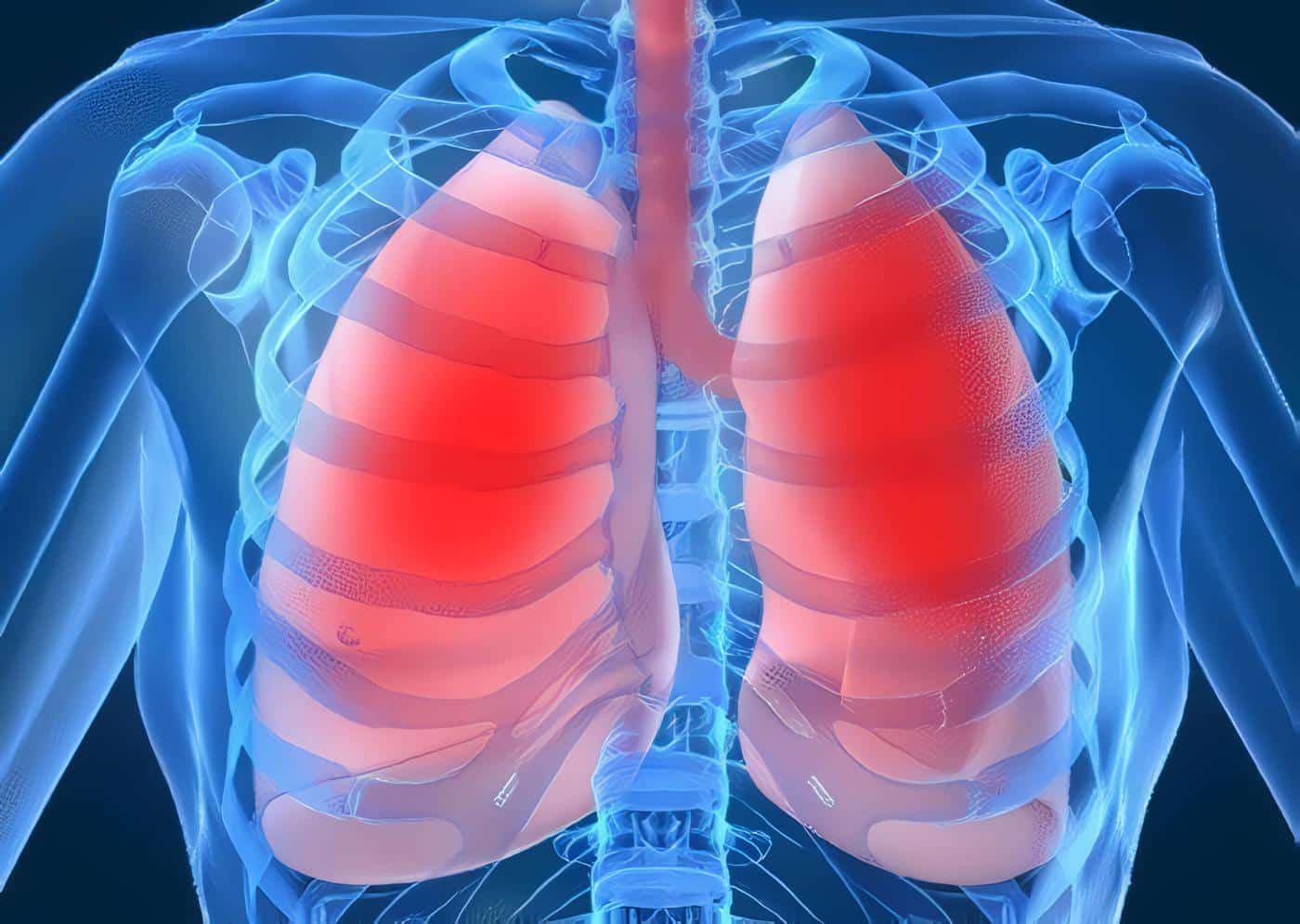Utilización de la gastroenterostomía
Mucho se ha discutido sobre la utilización de la gastroenterostomía como procedimiento paliativo en el cáncer gástrico con obstrucción pilórica. La experiencia en el Hospital de La Samaritana ha demostrado una alta mortalidad y un muy pobre control de la sintomatología (obstrucción) con reducidas supervivencias, experiencia que coincide con la de otros autores (43, 56, 58).
Aún cuando es cierto que en algunos casos se logra la paliación de la obstrucción, los malos resultados y la muy corta supervivencia que exhiben la mayoría de los casos, hace que la gastroenterostomía no sea un procedimiento recomendable en el cáncer gástrico.
Igual recomendación negativa debe hacerse para procedimientos destinados a mejorar el estado nutricional, tales como gastrostomía o yeyunostomía, los cuales también se acompañan de alta morbilidad y pobres resultados (58).
Pacientes con obstrucción, hemorragia o dolor, pueden ser sometidos a gastrectomía subtotal paliativa, y en muchos casos de tumores avanzados se obtienen resultados satisfactorios, con extensión de la supervivencia (58). La gastrectomía total, sin embargo, por su elevada mortalidad y alta frecuencia de complicaciones postoperatorias, no debe emplearse como procedimiento paliativo.
En conclusión, el autor actualmente ejecuta la política de operar a todo paciente con carcinoma de estómago con el propósito de realizar una resección curativa; si ésta no es posible, se realiza una gastrectomía subtotal paliativa para disminuir la masa tumoral y lograr una mayor supervivencia libre de dolor, hemorragia y, en aglunos casos, obstrucción. (Ver también: Tumores de la Región Distal)
Resumen
La conducta adoptada en el Hospital de La Samaritana coincide con algunos preceptos actualmente preconizados por la Clínica Lahey (54), uno de los centros que en una época promulgaron la extirpación radical y que mayor influencia produjeron en muchos países del mundo, así como con los preconizados por la Clínica Cleveland (55), institución que ha modificado muchos de los tradicionales principios de radicalidad en la cirugía del cáncer:
- Todo paciente con cáncer gástrico es sometido a exploración quirúrgica;
- Si la lesión es resecable, se emprende una operación “curativa”, la cual comprende la resección del tumor con márgenes suficientes, pero no excesivos, de tejido normal, tratando siempre de conservar un segmento de estómago proximal, y evitando la resección profiláctica del bazo, epiplones y órganos vecinos;
- No se realiza la gastrectomía total sino en situaciones en las cuales ésta es la única forma de lograr la extirpación total del tumor, y nunca como terapia paliativa;
- Se realizan grandes resecciones sólo para grandes cánceres, y se realizan pequeñas resecciones para tumores pequeños;
- Cuando no es posible realizar una resección curativa, se procede con una resección paliativa si ésta es fácilmente realizable y no significa una resección heroica o masiva; específicamente se realizan resecciones paliativas para controlar hemorragia, obstrucción y dolor; nunca debe hacerse una gastrectomía total como procedimiento paliativo, y la gastroenterostomía, la gastrostomía o la yeyunostomía tienen muy escasa indicación en la paliación del cáncer gástrico.
- Creemos que en última instancia el pronóstico del paciente depende del tipo y estado del tumor, de su rata de crecimiento y características biológicas y de otros factores de la relación tumor/paciente, más que del tipo y la radicalidad del tratamiento quirúrgico empleado.
Bibliografías
1. Schlatter, C. Ueber Ernahrung und Verdauung nach voll-standinger Entfernung des Magens- Oesophagoenterostomie beim Menschen. Beitr. klin. chir.19: 757, 1897.
2. Schlatter, C. A unique case of complete removal of the stomach; successful esophago- enterostomy, recovery. Med. Rec. (N.Y.) 52: 909,1897.
3. Schlatter, C. Esophago-enterostomy after total extirpation ofstomach. Lancet 1: 141, 1898.
4. Schlatter, C. Further observations on a case of total extirpation of the stomach in the human subject. Lancet2: 1314, 1898.
5. Billroth, T. Uber einen neuen Fall von Gellungener Resektion des carcinomatosen Pylorus. Wien Med Wochenschr31: 1247, 1881.
6. Paulino, F. and Rosselli, A. Carcinoma of the stomach. Current Problems in Surgery, December, 1973. Year Book Medical Publishers, Inc. Chicago.
7. Longmire, W. P. Total gastrectomyfor carcinomaof the stomach. Surg. Gynec. Obstet. 84: 21,1947.
8. Rush, B. F. and Ravitch, M. M. The evolution of total gastrectomy. Collective review. Intern. Abstr. Surg. 114:411,1962.
9. Finney,1. M. T. and Rienhoff, W. F., Ir. Total gastrectomy. Arch. Surg. 18: 140, 1929.
10. Lahey, F. H. Indications for, and experience with, total gastrectomy. Ann. Surg. 119: 303, 1944.
Otras Bibliografías
11. Lahey, F. H. Total gastrectomy. Surg. Clin. North Am.29: 747, 1949.
12. Lahey, F. H., Marshall, S. F. Should total gastrectomy be employed in early carcinoma of the stomacho Experience with 139 total gastrectomies. En: Surgical Practice of the Lahey Clinic. W. B. Saunders Company. Philadelphia, 1951. También publicadoen: Ann. Surg.132: 540,1950.
13. Lahey, F. H. Total gastrectomy for aIl patients with operable cancer ofthe stomach. Editorial. Surg. Gynec. Obstet. 90: 246, 1950.
14. Farris, 1. M., Ransom, H. K., and CoIler, F. A. Total gastrectomy. Effeets upon nutrition and hematopoiesis. Surgery 13: 823, 1943.
15. AlIen, A. W. Cancer of the stomach. Editorial. Surg. Gynec. Obstet. 92: 757, 1951.
16. ReMine, W. H., Priestley, J. T. Late results after total gastreetomy. Surg. Gynec. Obstet. 94: 519, 1952.
17. Rush, B. F., Brown, M. W., Ravitch, M. M. Total gastrectomy: an evaluation of its use in the treatment of gastric cancer. Cancer 13: 643, 1960.
18. Marshall, S. F. Total versus radical partial resection for cancer of the stomach. Editorial. Surg. Gynec. Obstet.104: 497,1957.
19. Nakayama, K. Evaluation of the various operative methods for total gastreetomy. Chirurg. 26: 266, 1955.
20. Veidenheimer, M. c., Logan, C. 1. H. Cancer ofthe stomach. Surg. Clin. North Am. 47: 621, 1967.
Fuentes Bibliográficas
21. Shackelford, R. T. Bickham-CaIlander Surgery of the Alimentary Tract. W. B. Saunders Company. Philadelphia, 1955.
22. Mueller, C. B., Jeffries, W. Cancer of breast: Outcome as measured by rate of dying and causes of death. Ann. Surg. 182: 334, 1975.
23. Mueller, C. B., Ames, F., and Anderson, G. D. Breast cancer in 3558 women: Age as a significant determinant in the rate of dying and cause of death. Surgery83: 123, 1978.
24. Garland, L. H. The rate of growth and natural duration of primary bronchial cancer. Am. 1. Roentg. 96: 604,1966.
25. Moertel, C. G. The natural history of advanced gastric cancer. Surg. Gynec. Obstet.126: 1071,1968.
26. Coller, F. A., Kay, E. B., McIntyre, R. S. Regional Iymphatic metastasis of carcinoma of the stomach. Arch. Surg. 43: 748, 1941.
27. Stevenson, J. K. Gastric carcinoma. En: Surgery of the Stomach and Duodenum. H. N. Harkins and L. M. Nyhus, Editors. Little, Brown and Company. Boston, 1962.
28. Collins, V. P., Loeffier, R. K., Tivey, H. Observations on growth rates of human tumors. Am. 1. Roentg. 76: 988, 1956.
29. Smithers, D. W. Clinical assessment of growth-rate in human tumors. Clin. Radiol.19: 113, 1968.
30. Gilbertsen, V. A. Results of treatment of stomach cancer: An appraisal of efforts for more extensive surgery and a report of 1983 cases. Cancer 23: 1305, 1969.
Otras Fuentes Bibliográficas
31. Lawrence, W., Jr., and McNeer, G. An analysis of the role of radical surgery for gastric cancer. Surg. Gynec. Obstet.111: 691,1960.
32. Cady, B., Ramsden, D. A., and Choe, D. S. Treatment of gastric cancer. Surg. Clin. North Am. 56: 599,1976.
33. Rubin, P. Cancer ofthe gastrointestinal. Comment: End results. En: Current Concepts in Cancer. Multidisciplinary Views. Cancer of the Gastrointestinal Tract. Part one (Esophagus, Stomach, SmaIl 1ntestine). Edited by P. Rubin. American Cancer Society. New York, 1975. (Reprinted from the Joumal ofthe American Medical Association, 1973 and 1974).
34. Mine, M. et al. End results of gastrectomy for gastric cancer: Effeet of extensive Iymph no de dissection. Surgery 68: 753, 1970.
35. Muto, M., Majima, S., and Yamaguchi, 1. 1mprovement in the end-results of surgical treatment of gastric cancer. Surgery 63: 229,1968.
36. Murakami, T. Early cancer of the stomach. World 1. Surg. 3: 685,1979.
37. Soga, J. et al. The role of Iymphadenectomy in curative surgery for gastric cancer. World J. Surg. 3: 701,1979.
38. Spiro, H. M. Clinical Gastroenterology. Página 202. Collier-Mcmillan Company. London, 1970.
39. Patiño, 1. F. Metabolismo, nutrición y shock en el paciente quirúrgico. Segunda edición. Fundación Lucia Patiño Osorio. Bogotá, 1981.
Referencias Bibliograficas
40. ReMine, W. H. 1ndications and contraindications for surgery in gastric carcinoma. World 1. Surg. 3: 709,1979.
41. Menguy, R. Surgical treatment of gastric adenocarcinoma. En: Current Concepts in Cancer. Multidisciplinary Views. Cancer of the gastrointestinal Tract. Part one (Esophagus, Stomach, Small 1ntestine). Edited by P. Rubin. American Cancer Society. New York, 1975. (Reprinted from the Joumal ofthe American Medical Association, 1973 and 1974).
42. ReMine, W. H. Carcinoma ofthe stomach. En: Abdominal Operations. Edited by R. Maingot. Appleton- Century-Crofts. New York, 1980.
43. ReMine, W. H., Priestley, 1. T., Berkson, 1. Cancer of the Stomach. W. B. Saunders Company. Philadelphia, 1964.
44. Dupont, J. B., Jr. et al. Adenocarcinoma of the stomach: Review of 1497 cases. Cancer 41: 941, 1978.
45. Holle, F. and Heinrich, G. Subdiaphragmatic fundusectomy. Surg. Gynec. Obstet.101: 385,1955.
46. Carey, J. M. and Clagett, O. T. Carcinoma of the lower portion of the esophagus and cardia of the stomach. Ann. Surg.142: 2, 1955.
47. Nissen, R. Preservation of the pyloric antrum in resection ofhigh gastric malignancies. Am. 1. Surg. 94: 52, 1957.
48. Millbourn, E. W. Pyloroplasty in subtotal proximal gastrectomy with esophagogastrostomy. Acta Chir. Scandinav. Fasc. 5, 114: 333,1957.
49. Lindskog, G. E., Liebow, A. A., and Glenn, W. W. L. Thoracic Surgery and Cardiovascular Surgery with Related Pathology. Third edition. Appleton- Century-Crofts. New York, 1975.
50. Terracol, J. And Sweet, R. H. Diseases of the Esophagus. W. B. Saunders Company. Philadelphia, 1958.
Otras Referencias Bibliograficas
51. Payne, W. C., and Olsen, A. M. The Esophagus. Lea & Febiger. Philadelphia, 1974. 52. Ashburn, F. S., Payne, 1. H, and Clagett, O. T. Transthoracic gastric resection for lesions ofthe cardia of the stomach and middle and lower portions of the stomach. En: Cancer ofthe Esophagus and Gastric Cardia. Edited by G. T. Pack. The C. V. Mosby Company. St. Louis, 1949.
53. Segura Vargas, J., OIarte, H., Martinez , A. Tratamiento quirúrgico radical y paliativo del cáncer gástrico 1961-1970. En: Temas Escogidos de Gastroenterologia. Tomo XXI. Sociedad Colombiana de Gastroenterologia. Bogotá, 1980.
54. Cady, B., et al. Gastric cancer. Contemporary aspects. Am. J. Surg.133: 423,1977.
55. Hoerr, S. Prognosis for carcinoma of the stomach. Surg. Gynec. Obstet. 137: 205,1973.
56. Dupont, B. 1., Cohn, l., Jr. Gastric adenocarcinoma. Current Problems in Cancer, February, 1980. Year Book Medical Publishers, Inc. Chicago.
57. Strauzser, T., Csendes, A. Cancer Gástrico. Centro de Colaboración para la Evaluación de los Métodos de Diagnóstico y Tratamiento del Cáncer Gástrico. Organización Mundial de la Salud. Santiago de Chile, 1975.
58. Stem, J. L., et al. Evaluation of palliative resection in advanced carcinoma of the stomach. Surgery 77: 291,1975.
59. Papachristou, D. N., Foster, 1. G. Adenocarcinoma of the gastric cardia. The choice of gastrectomy. Ann. Surg. 192: 58,1980.
60. Humphrey, E. W., Kersten, T. E. Adenocarcinoma at the esophagogastric junction. En: Controversy in Surgery. Edited by R. L. Varco and J. P. Delaney. W. B. Saunders Company. Philadelphia, 1976.
Autores Bibliográficos
61. McNeer, G., et al. Elective total gastrectomy for cancer ofthe stomach. Ann. Surg. 180: 252, 1974.
62. McNeer, G., et al. A more thorough operation for gastric cancer: Anatomical bases and description of technique. Cancer4: 957, 1951.
63. Cuello, c., Correa, P., et al. Gastric Cancer in Colombia. 1. Cancer risk and suspected environmental agents. J. Natl. Cancer Inst. 57: 1015, 1976.
64. Haenszel, W., Correa, P., Cuello, c., et al. Gastric Cancer in Colombia. n. Case-control epidemiological study of precursor lesions. J. Natl. Cancer Inst. 57: 1021, 1976.
65. Correa, P., Cuello, c., et al. Gastric Cancer in Colombia. IlI. Natural history of precursor lesions. J. Natl. Cancer Inst. 57: 1027, 1976.
66. Tannenbaum, S. R., Correa, P., Cuello, C., Haenszel, W. Nitrate and the etiology of gastric cancer. En: Origins of Human Cancer. Vol. IV. The Cell Proliferation Series. Cold Spring Harbor Laboratories. New York, 1977.
67. Correa, P., Cuello, C. Estudio de la etiología del cáncer gástrico. 1. Epidemiologia de cáncer y lesiones precancerosas. Acta Med. Valle 9: 1, 1978.
68. Correa, P., Cuello, C. Haenszel, W. Epidemiology of premalignant lesions. En: Pathophysiology of Carcinogenesis in Digestive Organs. E. Farber et al (editors). Univ. of Tokyo Press, Tokyo/Univ. Park Press. Baltimore, 1977.
69. Cuello, c., Correa, P., et al. Histopathology of gastric dysplasias. Correlations with gastric juice chemistry. Am. J. Surg. Path. 3: 491, 1979.
70. Montes, G., Cuello, c., et al. Mutagenic activity of gastric juice. Cancer Letters 7: 307, 1979.
Otras Autores Bibliográficos
71. Tannenbaum, S. R., et al. Gastric cancer in Colombia. IV. Nitrite and other ions in gastric contents of residents from a highrisk region. J. Natl. Cancer Inst. 62: 9, 1979.
72. Cuello, c., Correa, P. Dysplastic changes in intestinal metaplasia ofthe gastric mucosa. Am. 1. Surg. Path. In press.
73. Dupont, J. B. Surgery for gastric adenocarcinoma. En: Gastrointestinal cancer. Postgraduate Course 3. Ninth Annual Spring Meeting, American College of Surgeons. New Orleans, March 29-April, 1, 1981.
74. Segura, 1., OIarte, H., Martinez, A. Tratamiento quirúrgico radical y paliativo del cáncer gástrico (1961-1970). Trib. Médica (Bogotá) LX: 25,1979.





